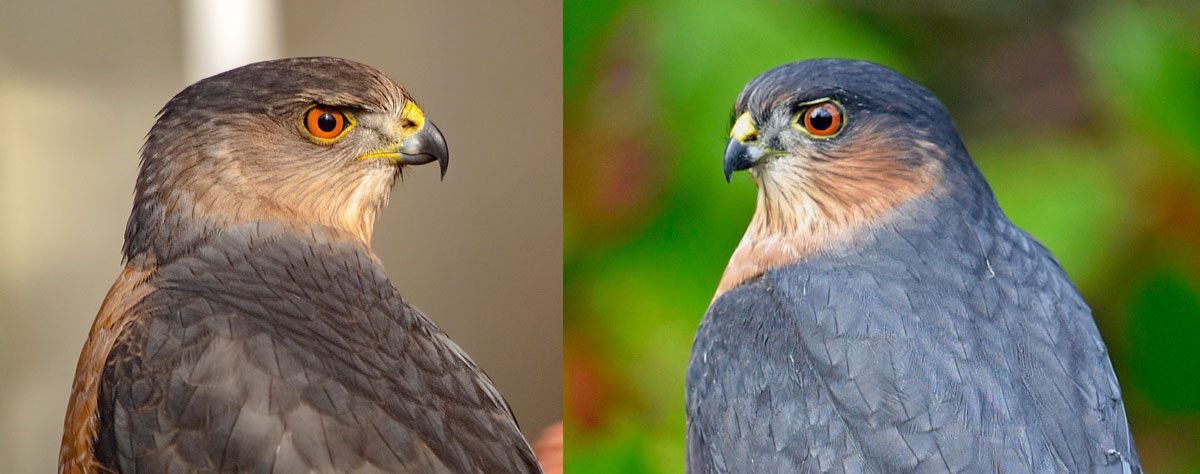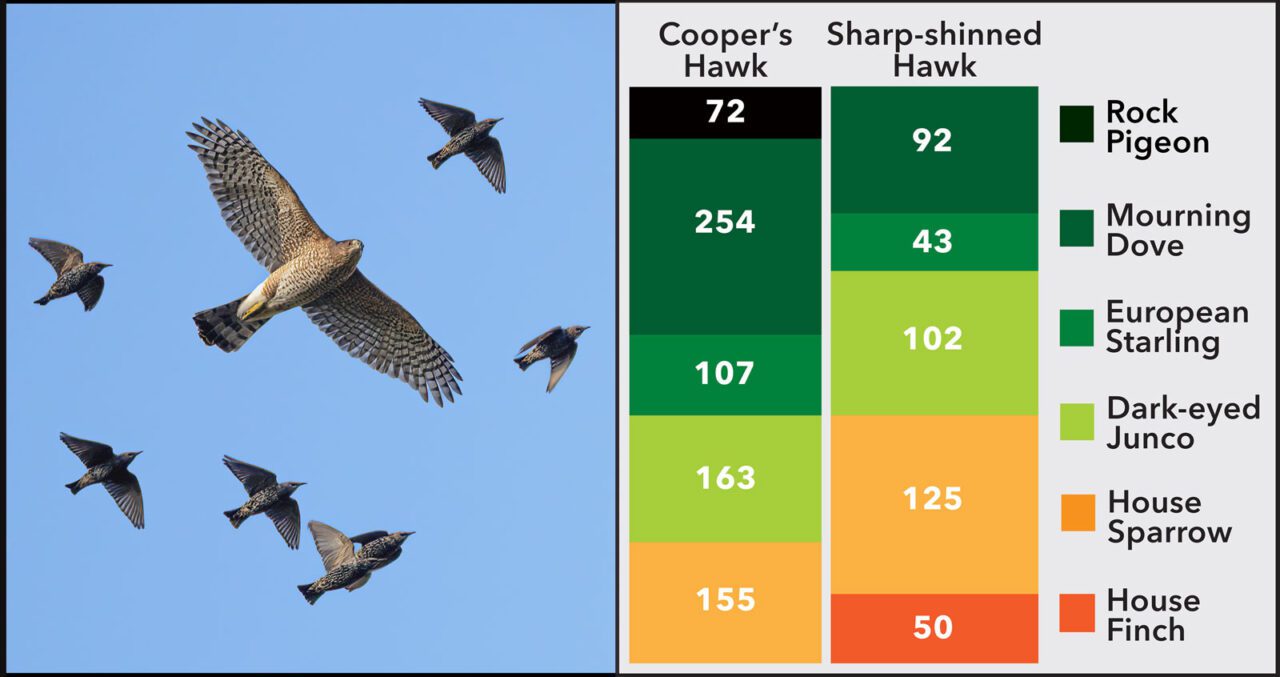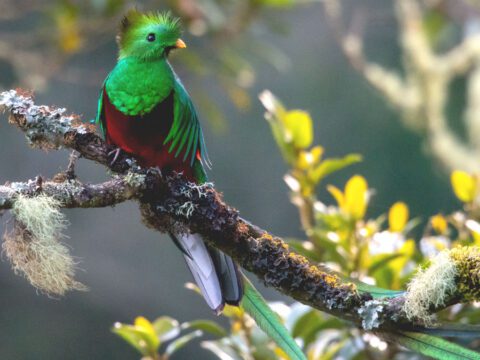How Do Cooper’s and Sharp-shinned Hawks Coexist in Backyards? FeederWatch Investigates
April 5, 2023
From the Spring 2023 issue of Living Bird magazine. Subscribe now.
A new study using Project FeederWatch data showed why Cooper’s Hawks and Sharp-shinned Hawks can share the same backyard when hunting at bird feeders.
The research, published in August 2022 in the Journal of Avian Biology, analyzed over 1,000 observations of accipiter predation from Project FeederWatch, a partnership between the Cornell Lab of Ornithology and Birds Canada, which collects data from people across the U.S. and Canada who count birds at their feeders each winter. The study results revealed which birds are on the menu for the two well-known feeder stalkers.
Sharp-shinned and Cooper’s Hawks are North America’s most common accipiters—the group of hawks that specializes in hunting birds on the wing. Their ranges overlap widely, and researchers wanted to know if differences in prey preferences might be one reason that these two similar species are sometimes able to share the same space.
Cooper’s Hawks are much larger than sharpies (on average, they weigh twice as much and are 50% longer), but the research team found that small songbirds—especially finches and sparrows—were top menu items for both Cooper’s and sharpies. The overall favorite: Dark-eyed Juncos.
“Juncos are like the popcorn of the avian world,” says lead author Eliot Miller, a postdoctoral fellow at the Cornell Lab. He says juncos’ intense ground-feeding habits make them easy marks.

While the petite Sharp-shinned Hawks heavily favored these smaller species, the bulkier Cooper’s Hawks went for both the popcorn and the hot dogs. Along with taking their share of small birds, Cooper’s Hawks frequently targeted medium-sized birds such as doves, starlings, and blackbirds.
“The smaller birds are much more abundant across different habitats,” says Miller, “so it makes sense that both hawk species would exploit that resource.”
Doves and starlings are often concentrated in urban areas, and Miller thinks that could be one reason that Cooper’s Hawks have moved into cities in recent decades.
The FeederWatch data also showed that many of the most-preyed-upon bird species shared a tendency to forage and feed on the ground. On the contrary, small songbirds such as chickadees and nuthatches—which abscond to a safe perch after quickly plucking seed from a feeder—became hawk food much less frequently.

All About Birds
is a free resource
Available for everyone,
funded by donors like you
American Kestrel by Blair Dudeck / Macaulay Library


